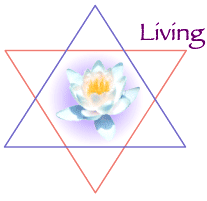Raja yoga can be defined as the royal path to unity, the meditative path. As such it is considered to be the supreme form of yoga. Hatha yoga can be understood as a preparation for raja yoga. Raja yoga deals with the mind and is also known as ashtanga yoga, the eightfold path or the eight limbs of yoga. Often, people consider it as separated and higher. But in fact, its practices which are dealing with the mind may be and should be integrated to the other paths of yoga. Then raja yoga enriches and complements hatha yoga as well as jnana yoga, karma yoga and bhakti yoga. |
The main objective of raja yoga is to control the mental energies which are generally dissipated and fluctuating. The mind has infinite capacities but due to its rajasic nature, it remains in constant activity. It is a very big task to concentrate and master it without negating or injuring it. The goal of raja yoga practices is to acknowledge, accept and redirect the mental activities without generating self-judgement and conflicts in the personality.
The eight limbs of Raja yoga
In the book "Yoga Sutras", Patanjali has defined the eightfold path :
- yama and niyama, personal and social rules of behaviour ;
- asana, major static postures concerning mainly meditation ;
- pranayama, the control of breath and pranas ;
- pratyahara, the withdrawal of the senses, which is the first stage in meditation ;
- dharana, concentration ;
- dhyana, the state of meditation ;
- samadhi, self realization and unity.
When this text was written, it was quite normal to begin with rules about behaviour. But later on, with the emergence of hatha yoga, it was stated that the first need of human beings is to undergo preliminary work on the body and energy, before applying these codes of conduct. Nevertheless, when a yoga practitioner feels ready, he or she has to find a smooth, harmonious way to apply the individual and social rules advised by Patanjali because it will ensure success in the higher levels of yoga and spiritual life. |

